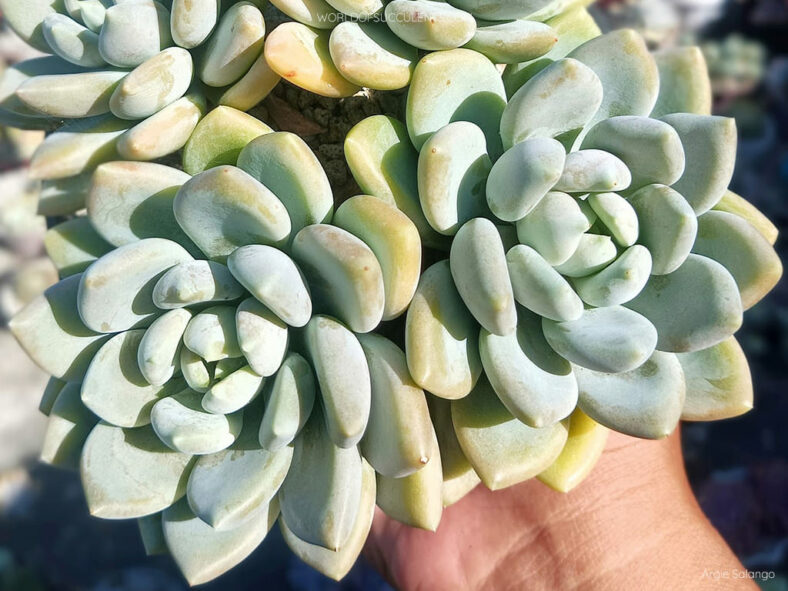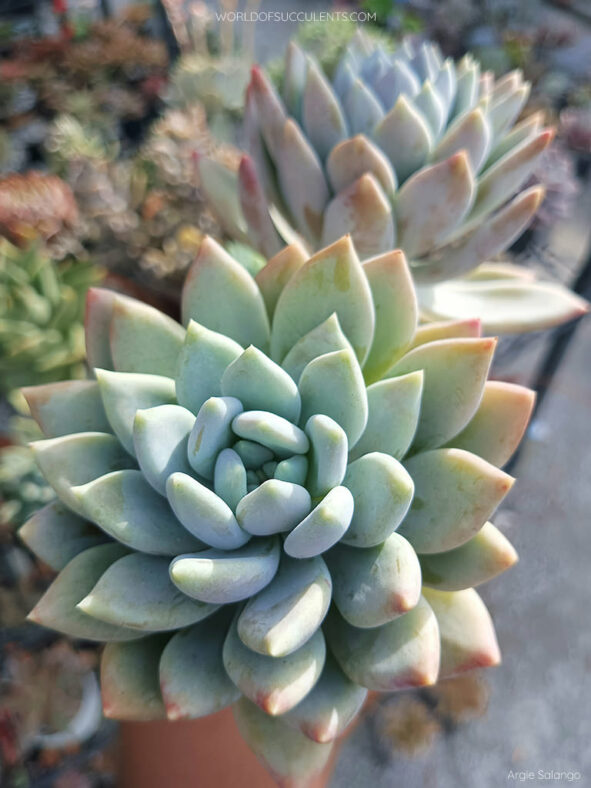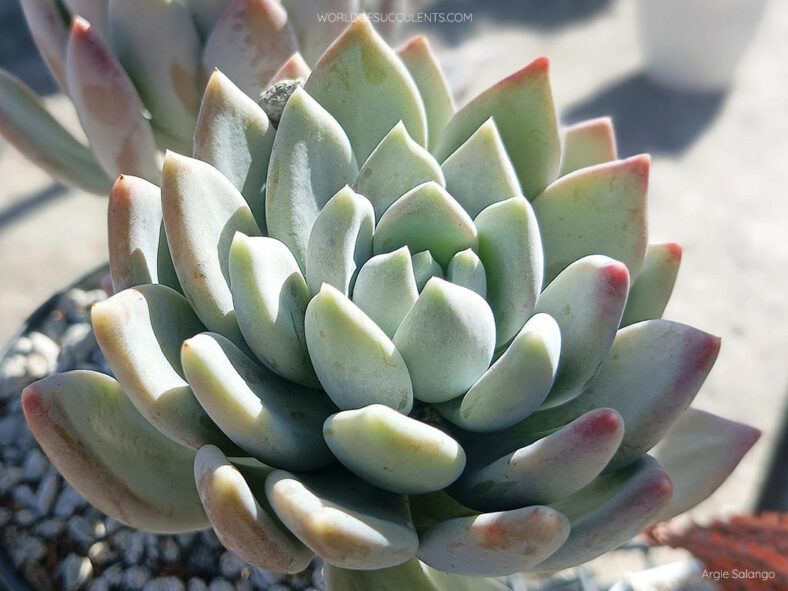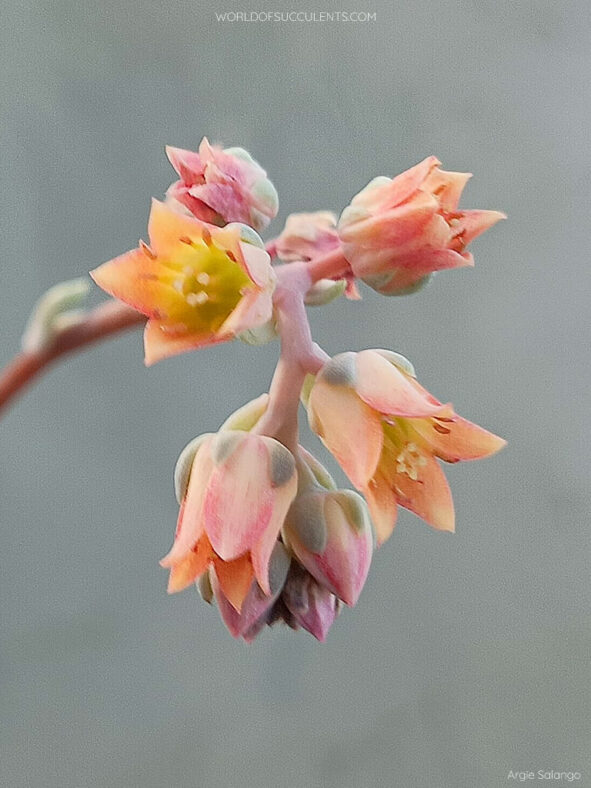×Pachyveria 'Corvus' is a small plant that grows in elegant, compact rosettes. It is also sold under the name Pachyphytum 'Corvus'.
Scientific Name
×Pachyveria 'Corvus'
Scientific Classification
Family: Crassulaceae
Subfamily: Sempervivoideae
Tribe: Sedeae
Nothogenus: ×Pachyveria
Origin
×Pachyveria 'Corvus' is a hybrid of unknown origin and parentage.
Description
×Pachyveria 'Corvus' is a small and beautiful succulent with blue-green leaves arranged in rosettes at the end of short stems. These rosettes can grow up to 5 inches (12.5 cm) in diameter. The leaves are fleshy, pointed, slightly curved upwards, and covered with a fine powdery coating. When the plant is grown in full sun, its leaves develop purple hues towards the tips.
During spring, ×Pachyveria 'Corvus' produces bell-shaped flowers on arching stalks with easily detached bracts. The flowers have pinkish-orange petals surrounded by short sepals the same color as the leaves.

How to Grow and Care for ×Pachyveria 'Corvus'
Light: ×Pachyveria 'Corvus' requires full sun to partial shade for optimal growth. Therefore, place it near the brightest window in your home. In addition, if you plan to move the plant outside in the spring, do so gradually and avoid exposing it to intense afternoon sun.
Soil: Having soil that drains quickly is most important for growing a healthy succulent. While many growers prefer to create their own soil mix, a commercial potting mix specifically formulated for succulents will work just fine.
Temperature: High temperatures are not a problem as long as there is plenty of fresh air. However, ×Pachyveria 'Corvus' is a tender succulent that must be brought indoors if there is a risk of freezing temperatures. It grows best in USDA Plant Hardiness Zones 10a to 11b, with average minimum winter temperatures ranging from 30°F to 50°F (- 1.1°C to 10°C).
Watering: During the growing season, this plant prefers the "soak and dry" method. Water deeply and then let the soil dry out completely before watering again. Water sparingly during the winter, only enough to keep the plant from shriveling. Above all, if you have a saucer under the pot, do not forget to empty the excess water.
Fertilizing: Although it can grow well without fertilizer, ×Pachyveria 'Corvus' may benefit from extra nutrients. Feed only during the growing season and use a water-soluble fertilizer diluted to half-strength.
Repotting: If growing this plant in a container, repot as needed in spring or early summer. Ensure the soil is dry before starting. Also, always use a container with drainage holes.
Propagation: ×Pachyveria 'Corvus' is easily propagated by stem cuttings, leaves, and offsets. Therefore, spring is the best time to take cuttings or separate offsets.
Learn more at How to Grow and Care for Echeveria.
Toxicity of ×Pachyveria 'Corvus'
×Pachyveria 'Corvus' has no toxic effects reported. However, although it is safe for children and pets to grow around, it is not advisable to eat it.
Links
- Back to nothogenus ×Pachyveria
- Succupedia: Browse succulents by Scientific Name, Common Name, Genus, Family, USDA Hardiness Zone, Origin, or cacti by Genus
Photo Gallery
Click on a photo to see a larger version.


